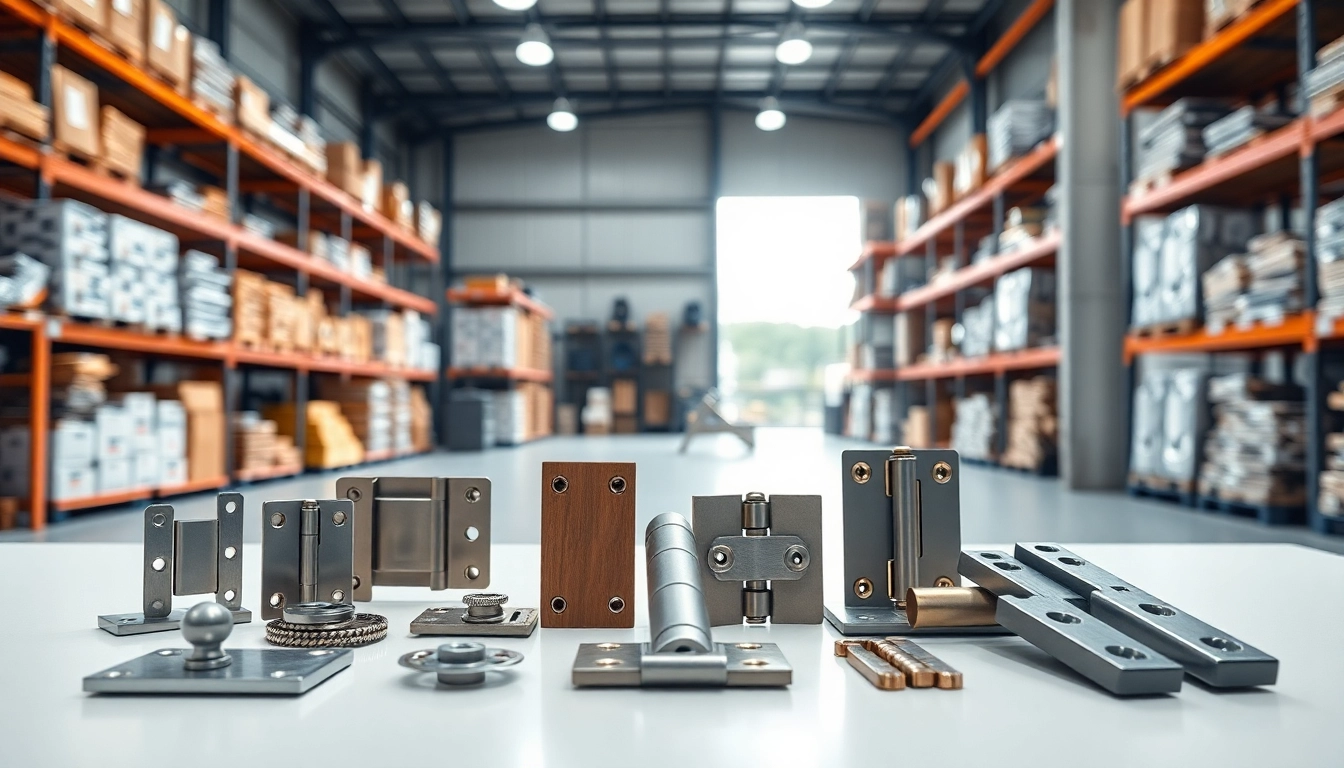Understanding Hinge Types and Applications
When it comes to constructing or renovating spaces, the type of hinge used can significantly influence both functionality and aesthetics. Hinges are essential hardware elements that connect two components, allowing them to pivot relative to each other. However, they come in various styles, materials, and designs, each serving particular needs. As a Hinge Supplier, understanding the nuances of these hinges can help you make informed purchasing decisions that best suit your projects.
Popular Types of Hinges
Hinges can be categorized based on their design, material, and intended use. Here are some of the most popular types:
- Butt Hinges: The most common type used in residential doors, they consist of two rectangular plates joined by a pin. Easily adjustable, these hinges work for internal and external doors.
- Continuous Hinges: Also known as piano hinges, these run the entire length of the door. Their robust design makes them suitable for heavy doors and high-traffic areas.
- Spring Hinges: Designed for self-closing applications, these hinges contain a spring mechanism that closes the door automatically. Frequently used in commercial settings, they enhance security and energy efficiency.
- Concealed Hinges: These hinges are hidden within the door and frame, providing a clean appearance and are commonly used for cabinet doors.
- Strap Hinges: These are typically used in gates and sheds. They contain long arms that allow for a wider opening range.
- Offset Hinges: Ideal for applications requiring more clearance, these hinges are positioned off-center to provide extra space.
- Pivot Hinges: These allow doors to pivot from a single point at the top and bottom, often used for heavy doors or those with unique designs.
Applications for Residential vs. Commercial Hinges
The choice between residential and commercial hinges often depends on the use case, expected traffic levels, and design preferences:
Residential Hinges: Typically made from materials like brass, steel, or aluminum, they need to balance aesthetics with durability. Common applications include interior doors, cabinets, and garage doors.
Commercial Hinges: Generally designed for higher traffic and more demanding environments, these hinges are made from heavier materials and often feature additional security and durability properties. They are commonly used on entrance doors, fire-rated doors, and security applications.
Key Features to Look for in a Hinge
When selecting hinges, several key features should be prioritized:
- Load Capacity: Ensure the hinge can support the weight of the door. This is critical for maintaining longevity.
- Material Quality: Look for corrosion-resistant materials if used in humid or outdoor environments. Stainless steel and brass are often recommended.
- Finish: Aesthetic finishes can enhance the design. Options range from polished chrome to powder-coated colors.
- Pin or No Pin: Decide if you need removable pins for adjustments or security, as some designs do not allow for it.
- Security Features: For commercial applications, consider hinges with enhanced security features like lockable designs or tamper-proof screws.
Evaluating Hinge Suppliers: What to Consider
Choosing the right supplier is critical to ensure you receive high-quality products and services. Here’s what you should evaluate:
Quality and Durability of Hinges
Not all hinges are created equal. Assessing the quality and durability of hinges is paramount. Look for suppliers that offer materials backed by certifications or industry standards. Additionally, reading product specifications and customer reviews can provide insights into real-world performance.
Supplier Reputation and Customer Reviews
An established supplier should have a positive reputation in the industry. Evaluate potential suppliers by checking their customer reviews, testimonials, and any case studies available on their website. Engaging with past clients can also give you firsthand insights into their reliability and service quality.
Pricing and Delivery Options
While pricing is a consideration, remember that the cheapest option may not always equate to the best quality. Evaluate the overall value, considering material quality, delivery options, and after-sales service. Understanding the delivery schedules and logistics processes of your suppliers can help ensure your project stays on track.
Benefits of Sourcing Hinges from Reliable Suppliers
Opting for hinges from a reputable supplier can confer several advantages:
Long-Term Cost Savings
Investing in high-quality hinges can lead to long-term savings by reducing the need for replacements or repairs. Quality hinges are designed to withstand wear and tear, especially in high-traffic scenarios, thus decreasing maintenance costs over time.
Access to a Broader Range of Products
A reliable supplier will offer a diverse range of products that can cater to different architectural needs and aesthetic preferences. This variety allows you to select the right hinge for your specific application without compromising quality or style.
Expert Advice and Support
Reputable hinge suppliers often have experts on hand to assist with product selection, installation advice, and troubleshooting. This level of support can enhance your project’s success by ensuring you’re making the best choices tailored to your needs.
Custom Hinges: When and Why to Opt for Custom Solutions
While standard hinges suffice for many applications, bespoke solutions can provide advantages in specialized scenarios. Here’s when and how to consider custom hinges:
Identifying Needs for Customization
Custom hinges become necessary when off-the-shelf products do not meet your specific requirements. For example, if you’re working with non-standard door sizes, unique materials, or customized aesthetics, a custom hinge can offer perfect functionality and visual appeal.
Working with Your Supplier on Designs
Once you’ve identified the need for custom hinges, collaboration with an experienced supplier is essential. Discuss your specifications in detail, including dimensions, load capacity, materials, and intended finishes. Suppliers will often guide you through the design process and provide digital samples or prototypes for evaluation.
Case Studies of Successful Custom Hinge Applications
Focusing on case studies can help illustrate the value of custom hinges. Consider how custom solutions can enhance specific projects—commercial buildings that require unique security features or residential designs with personalized aesthetic touches. Insights from previous projects can illustrate the potential for innovation and creativity in hinge solutions.
Future Trends in the Hinge Industry
As the needs of consumers and industries evolve, the hinge market is also progressing. Here are some trends shaping its future:
Emerging Materials and Technologies
The introduction of innovative materials, including composite and engineered metals, is paving the way for stronger, lighter hinges. Additionally, advancements in manufacturing technologies such as 3D printing offer the potential for intricate designs and faster production times, allowing suppliers to cater to a broader array of customer specifications and needs.
Green Hinge Manufacturing Practices
With increased awareness of sustainability, many manufacturers are moving toward eco-friendly materials and production processes. This shift includes using recycled materials and reducing waste during the manufacturing process. Suppliers focused on sustainability can appeal to environmentally conscious clients and contribute positively to their brand image.
Market Trends Impacting Hinge Suppliers
The hinge industry must adapt to multiple market changes, including evolving design trends, regulatory requirements, and fluctuating economic conditions. Understanding these trends can help suppliers stay ahead and offer products that meet emerging demands while maintaining their competitive edge in the market.



